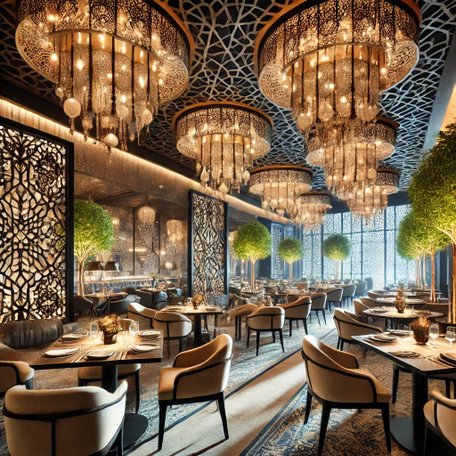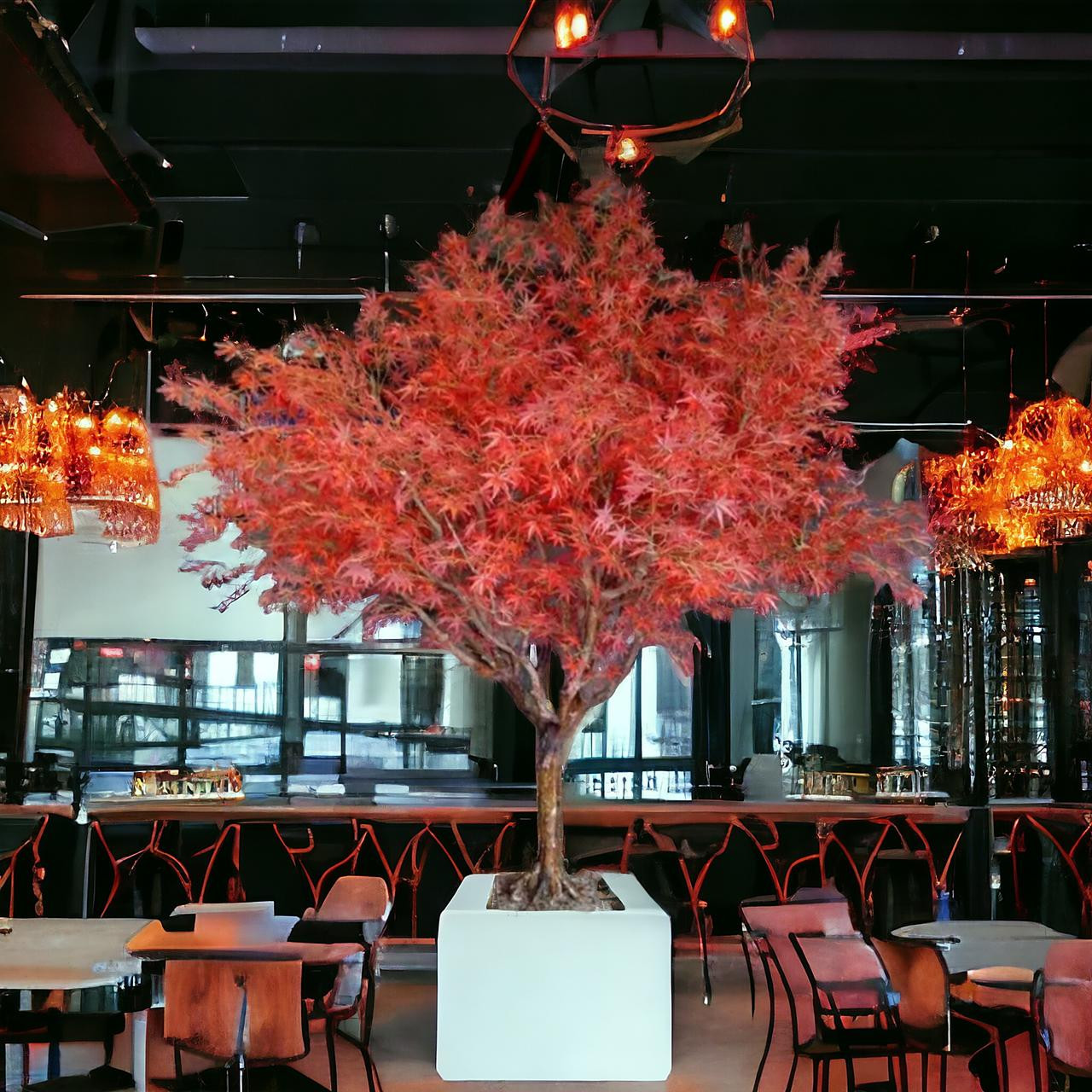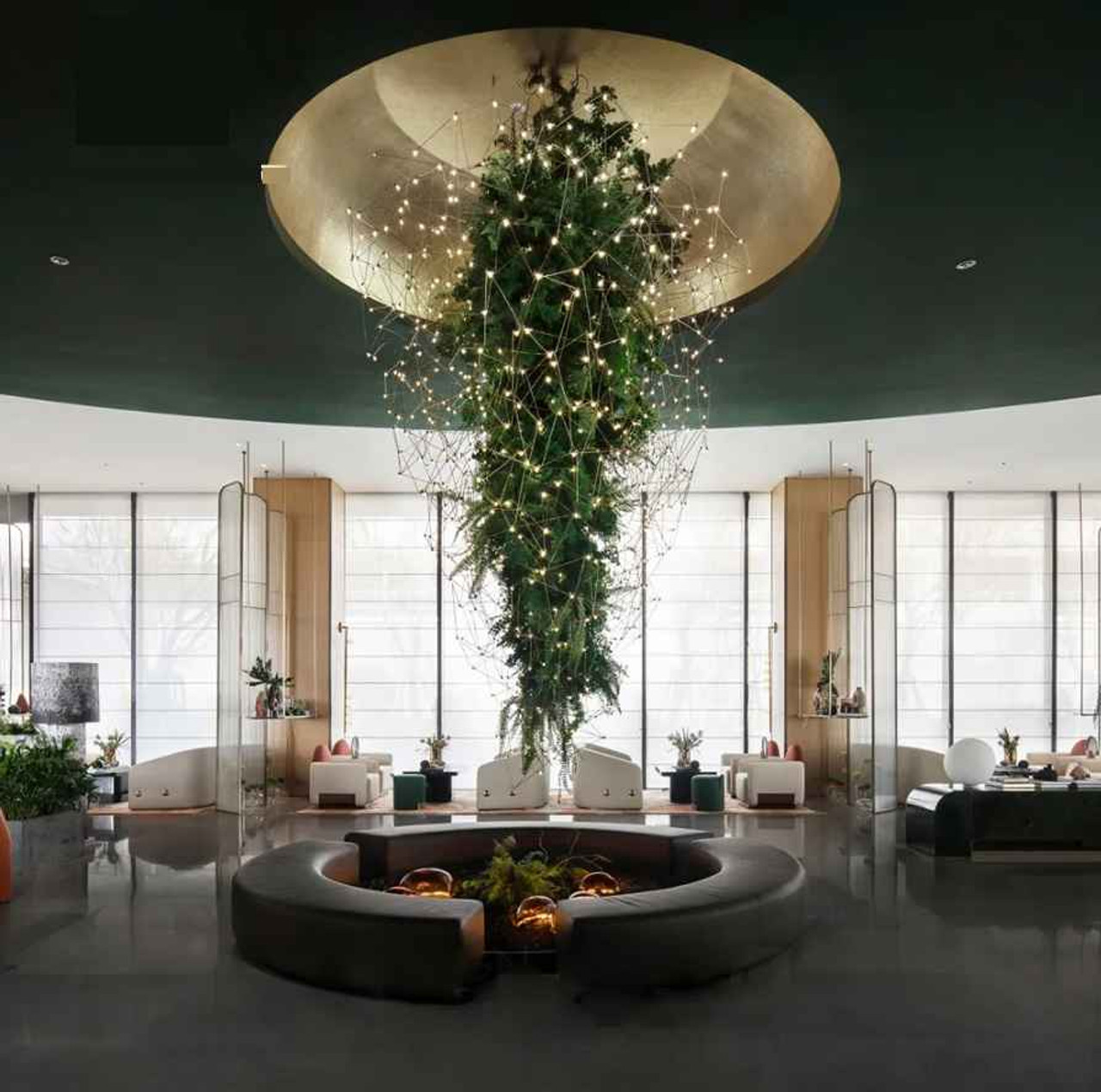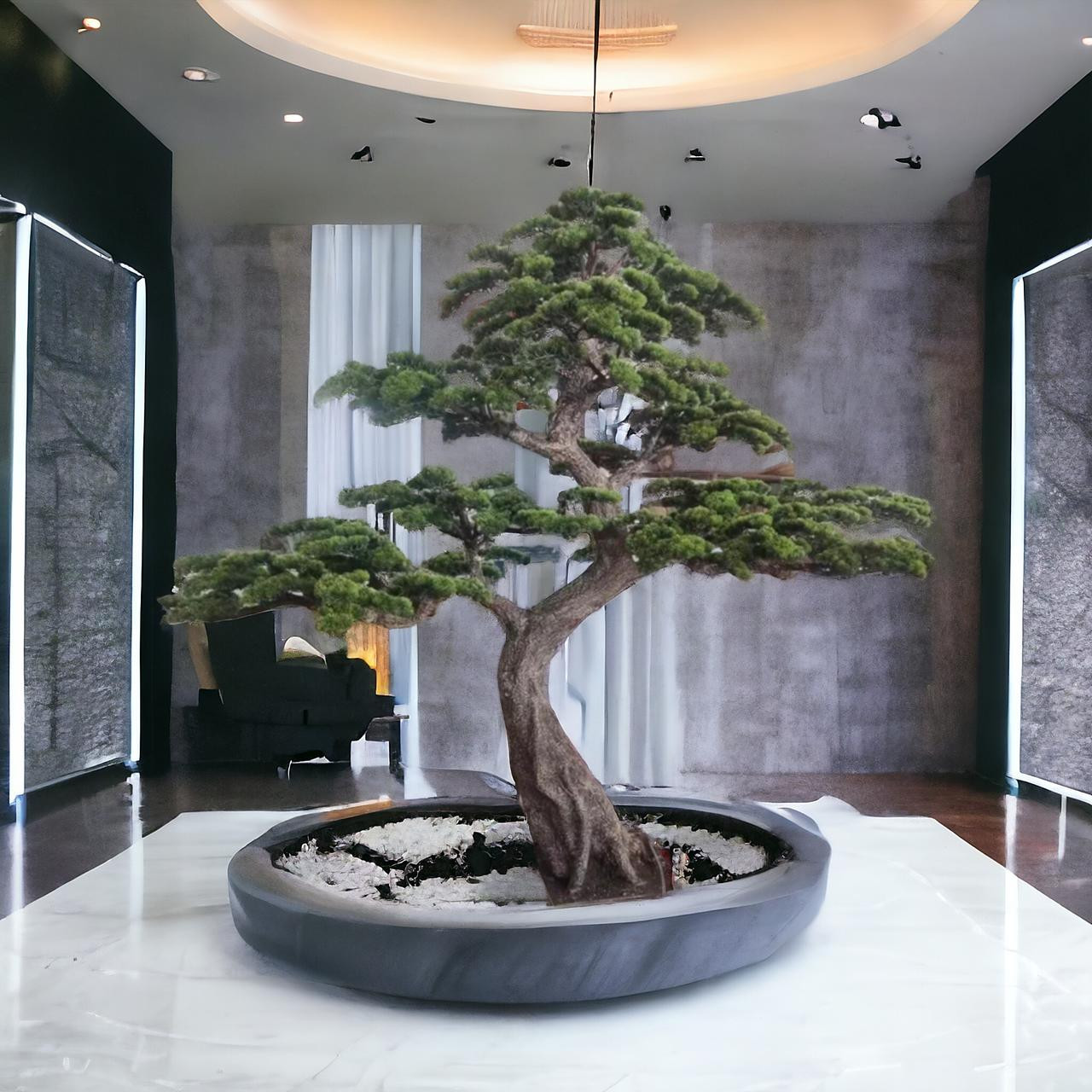Exploring Luxury Restaurant Interior Design Abu Dhabi: Blending Tradition with Contemporary Style
Posted by Kurtis Walton - Architectural Designer on 8th Sep 2024
In the world of architecture and urban planning, we often discuss how spaces evolve, adapting to the demands of modern life while maintaining connections to their cultural roots. Abu Dhabi is a city where such evolution is happening at a rapid pace, with luxury restaurant interiors becoming a prime example of this cultural and architectural blend. The city’s rise as a global destination for tourism, business, and lifestyle has created a unique space for innovation in restaurant interior design Abu Dhabi, where contemporary aesthetics meet deeply rooted traditions.
Luxury restaurant interiors in Abu Dhabi do more than just house patrons—they are carefully crafted environments that offer an experience of indulgence and sophistication. What makes this blend of tradition and modernity in restaurant design so intriguing is the way designers balance the demands of cutting-edge luxury with the history, culture, and values of the region. The rise of this design ethos has led to spaces that feel fresh and contemporary while still resonating with the past.
The Context of Restaurant Interior Design Abu Dhabi
Abu Dhabi’s restaurant scene is a reflection of the city itself—rich in diversity, global in outlook, and deeply rooted in its cultural heritage. The city has embraced the culinary arts, not just as a function of hospitality but as a central aspect of its cosmopolitan identity. Here, restaurant interior design Abu Dhabi plays a vital role in creating dining spaces that reflect both the luxurious sensibilities of modern clientele and the city’s rich cultural heritage.
The design of a luxury restaurant in Abu Dhabi requires an intricate balance. It must meet the expectations of a discerning, global clientele while also paying homage to the region's history and aesthetics. Often, this involves integrating traditional Middle Eastern architectural elements, such as arabesque patterns, calligraphy, and geometric tile work, into sleek, modern interiors. These spaces not only offer comfort and elegance but also evoke a deep sense of place. The best luxury restaurants in Abu Dhabi are able to provide a dining experience that is both of the moment and timeless, drawing on tradition even as they push boundaries.
In this landscape, materials, textures, and lighting play critical roles. Natural stones, wood, and high-end fabrics are frequently used to create an atmosphere of warmth and opulence. But more than that, lighting—both natural and artificial—becomes a key feature in defining these luxurious spaces. And within this conversation, one cannot overlook the role of chandeliers and statement lighting pieces in restaurant interior design Abu Dhabi.
Chandeliers as Centerpieces in Abu Dhabi's Restaurants
A luxury restaurant in Abu Dhabi is not complete without an eye-catching chandelier that does more than simply illuminate—it commands attention and becomes a focal point of the entire space. In this context, brands like Jas Boutique have become essential in shaping the luxury interiors of Abu Dhabi’s finest dining establishments. Jas Boutique offers a range of chandeliers that blend traditional craftsmanship with contemporary innovation, a reflection of the broader design ethos seen in Abu Dhabi.
Chandeliers in Abu Dhabi's restaurant spaces do more than hang from the ceiling; they serve as a bridge between the traditional and the modern. Often inspired by classical European designs, these chandeliers are adapted to the cultural setting of the Middle East, incorporating materials and shapes that resonate with local traditions. Take, for example, the use of crystal chandeliers. In Abu Dhabi, chandeliers made with crystal not only evoke a sense of luxury but also play with light in ways that mimic the natural sparkle of the desert sun or the shimmer of the Arabian Gulf.
Jas Boutique's chandelier designs, with their intricate craftsmanship and ability to transform a room, are perfectly suited to Abu Dhabi's restaurant interior aesthetic. Their pieces often use gold leaf finishes and glass details that reflect the grandeur of Islamic art and architecture while simultaneously maintaining a clean, modern edge. A well-placed chandelier in a restaurant space brings not just light but a sense of occasion, enhancing the dining experience by creating an atmosphere of exclusivity and elegance.
Artificial Trees: A Blend of Nature and Artifice in Restaurant Design
While chandeliers are an essential feature in restaurant interior design Abu Dhabi, another design element that has gained popularity is the incorporation of artificial trees. In a city where desert landscapes meet cutting-edge urban design, the introduction of natural elements into luxurious interiors creates a striking contrast. Artificial trees allow designers to bring the serenity of nature indoors while maintaining the polished and controlled aesthetic of a luxury environment.
These trees are not simply decorative—they serve a function in breaking up space, offering privacy between dining tables, and enhancing the overall ambiance. The presence of greenery softens the harder, more industrial elements often found in contemporary restaurant interiors, creating a balance between organic warmth and sleek design.
Incorporating artificial trees into luxury restaurant spaces also reflects a broader trend in biophilic design, which is about connecting people to nature through their environment. In Abu Dhabi, where the hot climate makes natural greenery less abundant, artificial trees provide a way to achieve the look and feel of nature without the practical difficulties of maintaining live plants. They are often used in conjunction with other natural elements—wooden beams, stone accents, and water features—to create a holistic design that feels both sophisticated and grounded.
The combination of artificial trees with statement lighting like chandeliers creates an interplay between the natural and the artificial, a reflection of Abu Dhabi’s broader identity. The city itself is a blend of traditional culture and modern innovation, and its luxury restaurants are a microcosm of this dynamic. Artificial trees, placed strategically throughout dining spaces, help evoke a sense of calm and intimacy, even in the grandest of settings.
Tradition Meets Innovation: Architectural Elements in Restaurant Design
One of the most fascinating aspects of restaurant interior design Abu Dhabi is the seamless blend of traditional architectural elements with contemporary trends. The fusion of these styles is not only visually striking but also rich in meaning, paying homage to the history of the region while embracing its modern future.
Traditional Islamic architecture often informs the design of these luxury spaces, with elements like intricate mashrabiya screens, arabesque motifs, and geometric patterns used to great effect. Mashrabiya screens, traditionally used to allow light and air into buildings while maintaining privacy, are often repurposed in modern restaurant interiors as decorative features. These screens may divide dining areas, creating a sense of intimacy, or be used as backdrops to enhance the visual impact of the space.
Meanwhile, geometric patterns, so central to Islamic art and architecture, are reinterpreted in the flooring, walls, and ceilings of these restaurants. In many instances, these patterns are paired with high-end materials like marble or brass, giving them a contemporary twist. The result is a design language that feels both rooted in tradition and undeniably modern.
In luxury restaurants, such design elements often come together with contemporary furnishings and modern layouts. Minimalist furniture, sleek lines, and open-plan spaces contrast beautifully with the ornate details of traditional motifs. This juxtaposition is the hallmark of restaurant interior design Abu Dhabi, where the old and the new exist in harmony, reflecting the city’s place as a bridge between East and West, tradition and progress.
Lighting Design: Elevating the Dining Experience
In the world of luxury dining, lighting is as critical as the food itself. The right lighting can turn a meal into an experience, enhancing flavors, colors, and textures in ways that are both subtle and powerful. In restaurant interior design Abu Dhabi, lighting is a carefully orchestrated element that brings everything else together. Chandeliers, as already mentioned, are often the centerpiece of a room, but they are part of a broader lighting strategy that includes ambient, accent, and task lighting.
Luxury restaurants in Abu Dhabi often employ layered lighting designs, where different types of light sources work together to create a specific atmosphere. Ambient lighting provides general illumination, while accent lighting is used to highlight specific areas—like a beautifully designed mashrabiya screen or a statement piece of art. Task lighting is used more subtly, ensuring that diners can see their food and menus without feeling overwhelmed by harsh light.
Chandeliers, such as those from Jas Boutique, are often central to this layered lighting approach. Their placement and design are carefully considered to ensure they do more than simply illuminate the space—they must enhance the atmosphere, complementing the interior architecture and elevating the dining experience. The interplay of light and shadow, often achieved through ornate chandelier designs, can create a dynamic environment that feels both intimate and grand.
Cultural Sensitivity in Design
When we talk about restaurant interior design Abu Dhabi, we must also consider the importance of cultural sensitivity. This is not simply about adding traditional motifs to a modern space; it’s about understanding the values and customs that define the region and incorporating those into the design in a meaningful way.
For example, dining in the Middle East often revolves around social gatherings and sharing meals, and restaurant interiors are designed with this in mind. Communal tables, private dining spaces for families, and open kitchens where food is prepared in view of the diners all speak to the importance of social interaction in Middle Eastern culture. The layout of a restaurant is as important as its décor, ensuring that the space encourages interaction and community while still providing an atmosphere of exclusivity and luxury.
In this context, chandeliers and artificial trees play a role not only in the aesthetic design but also in how the space functions. Chandeliers can create focal points in private dining areas, adding to the sense of occasion when families or groups come together to share a meal. Meanwhile, artificial trees help define separate spaces, offering a sense of privacy without making the room feel closed off. These design choices reflect an understanding of how space is used in the Middle East, balancing the need for intimacy with the desire for openness and connection.
Conclusion: The Future of Restaurant Interior Design Abu Dhabi
Abu Dhabi is a city that continually evolves, and its luxury restaurant interiors are no exception. The blend of tradition and modernity in restaurant interior design Abu Dhabi reflects the broader transformation of the city itself—where innovation meets heritage, and where global influences coexist with local customs.
As luxury dining experiences continue to develop, we can expect to see even more creative integrations of chandeliers, artificial trees, and other design elements that draw on both contemporary trends and traditional values. Brands like Jas Boutique will undoubtedly remain at the forefront of this movement, offering bespoke pieces that enhance the uniqueness of these dining spaces.
The challenge for designers in Abu Dhabi will be to continue pushing the boundaries of what is possible in restaurant interiors while remaining true to the city’s cultural and architectural roots. By doing so, they will ensure that the city remains a global leader in luxury dining, where every meal is a feast for the senses, not only through the flavors on the plate but also through the beauty of the space itself.





